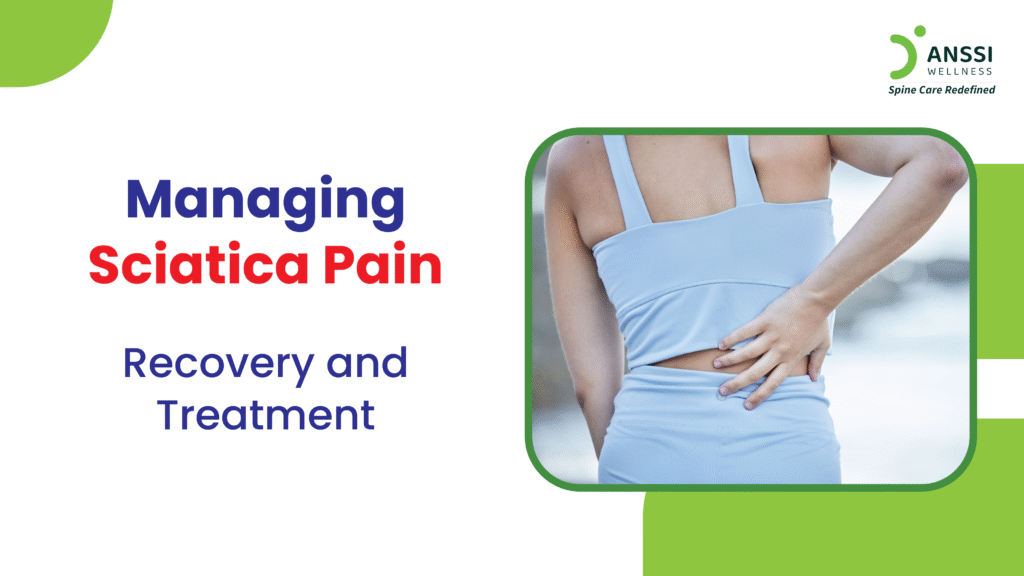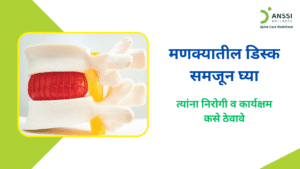Sciatica is one of the most common nerve-related conditions, affecting millions of people around the world. It occurs when the sciatic nerve, the largest nerve in your body, becomes compressed, irritated, or inflamed. Sciatica pain can be shooting, burning, or acute type, and it frequently travels from the lower back to the buttocks and into the leg.
Fortunately, with the right care and approach, managing sciatica naturally is very achievable, often without the need for surgery or heavy medication.
Understanding Sciatica
Sciatica isn’t a condition in itself but rather a set of symptoms caused by an underlying problem affecting the sciatic nerve.
Common symptoms include:
- Lower back pain that may extend into the hip, buttock, or leg
- Numbness or tingling in the leg or foot
- Weakness in the leg muscles
- Burning or shooting pain that worsens with sitting, coughing, or sneezing
Several underlying issues can trigger sciatic nerve compression, such as:
- Herniated or bulging discs pressing on the nerve roots
- Spinal stenosis, or narrowing of the spinal canal
- Degenerative disc disease
- Piriformis syndrome, where the piriformis muscle irritates the sciatic nerve
- Poor posture and prolonged sitting
Understanding the root cause of sciatica is key to finding the most effective and lasting treatment.
Effective Non-Surgical Treatments
Thankfully, many cases of sciatica can be managed successfully with non-surgical, drug-free methods that focus on relieving nerve pressure, improving spinal health, and promoting natural healing.
Here are the most effective strategies:
Non-Surgical Spinal Decompression Treatment
Non-Surgical Spinal Decompression Treatment is one of the most advanced non-surgical options for sciatica relief. This technique gently stretches the spine using a computer-controlled system, creating negative pressure within the spinal discs.
This treatment:
- Aids in pulling protruding or herniated discs away from nerve roots
- Reduces compression on the sciatic nerve
- Enhances blood flow and nutrient delivery to the discs for faster healing
Non-Surgical Spinal Decompression Treatment is a safe, painless procedure designed to naturally relieve back and nerve pain without the risks of surgery or medication.
Gentle Physical Therapy and Posture Correction
Targeted physical therapy plays a crucial role in managing sciatica.
Specific exercises help to:
- Strengthen your core muscles so that the spine can be supported better
- Stretch any tense muscles that might be putting pressure on the nerve
- Improve flexibility and balance
- Correct postural imbalances that contribute to nerve irritation
Simple daily exercises like pelvic tilts, knee-to-chest stretches, and cat-cow movements can help relieve tension in the lower back and pelvis. Proper posture while sitting, standing, and moving is equally important to avoid placing additional stress on the sciatic nerve.
Anti-Inflammatory Diet and Hydration
Inflammation around the sciatic nerve can worsen pain and delay recovery. Adjusting the diet to include anti-inflammatory foods can support healing from within.
Beneficial foods include:
- Fatty fish rich in omega-3s (like salmon and sardines)
- Leafy greens like spinach and kale (karam saag)
- Berries, which are high in antioxidants
- Nuts and seeds, especially walnuts and flaxseeds
- Turmeric and ginger, which are natural anti-inflammatory spices
At the same time, it’s important to avoid processed foods, excess sugar, and trans fats that can trigger inflammation.
Hydration is just as crucial. Water supports spinal disc health and helps flush out toxins that contribute to inflammation.
Heat and Cold Therapy for Symptom Relief
Alternating heat and cold packs is a simple yet highly effective home remedy for managing sciatica symptoms:
- Cold therapy reduces nerve inflammation and numbs sharp pain. It is ideal for flare-ups or after activity.
- Heat therapy increases blood flow, relaxes tight muscles, and eases stiffness. It is helpful in the morning or before stretching.
Apply cold or heat for 15-20 minutes at a time, several times a day, depending on your symptoms.
Lifestyle Modifications: Ergonomic Adjustments and Movement Breaks
Making small adjustments in your daily environment and routine can greatly reduce sciatic nerve pressure:
- Use chairs with proper lumbar support.
- Keep your computer monitor at eye level to maintain neck and back alignment.
- Avoid prolonged sitting. Stand up and stretch every 30-60 minutes.
- Sleep on a supportive mattress with proper spine alignment.
Even light, regular activities like walking can promote circulation, reduce stiffness, and speed up recovery.
About ANSSI:
ANSSI Wellness focuses on improving the quality of life for patients suffering from spinal issues, aiming to provide relief where other conventional treatments have failed. Through advanced non-surgical spinal decompression treatment, ANSSI is committed to helping patients avoid surgery and recover in a safe, effective, and compassionate environment.
Connect with ANSSI Wellness on LinkedIn, Instagram, and Facebook for expert guidance.



